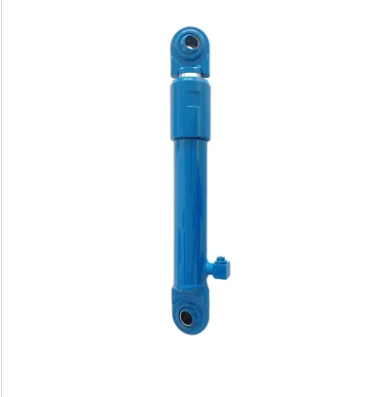Nov . 21, 2024 13:28 Back to list
bleeding hydraulic cylinder product
Understanding Bleeding in Hydraulic Cylinders Importance and Best Practices
Hydraulic cylinders play an essential role in various industrial applications, from construction equipment to manufacturing machinery. These powerful devices convert hydraulic energy into linear motion, enabling precise control and heavy lifting capabilities. However, to ensure their optimal performance and longevity, it is crucial to address the issue of bleeding in hydraulic cylinders.
What is Bleeding?
Bleeding in hydraulic systems refers to the process of removing trapped air from the hydraulic lines and cylinders. Air can enter the system during maintenance, fluid changes, or even through leaks. When air gets trapped in the hydraulic lines, it can lead to a phenomenon known as cavitation, which significantly compromises the efficiency and responsiveness of the hydraulic cylinder.
Trapped air can cause several problems, including decreased performance, erratic movements, and increased wear on the hydraulic components. Moreover, if left unaddressed, air in the system can lead to complete system failure, resulting in costly downtime and repairs. Therefore, bleeding the hydraulic cylinder is a critical task for any maintenance team.
Why is Bleeding Necessary?
1. Performance Improvement Air in the hydraulic system can result in soft or sluggish operation. By removing trapped air, operators can restore the cylinder's full functionality, ensuring smooth and efficient operation.
2. Avoiding Cavitation Cavitation can lead to damage in hydraulic components due to high pressures generated by vapor bubbles collapsing in the fluid. Bleeding the cylinder helps to prevent this phenomenon and extend the lifespan of the equipment.
3. Safety Hydraulic systems under high pressure can be dangerous, especially if there is an unexpected failure. Ensuring that the system is free of air reduces the risk of sudden pressure changes and enhances overall safety.
bleeding hydraulic cylinder product

4. Maintenance Regular bleeding is an essential part of hydraulic maintenance. It can help detect other issues in the system early on, such as leaks or worn-out seals, preventing more significant failures down the line.
Best Practices for Bleeding Hydraulic Cylinders
1. Preparation Before beginning the bleeding process, ensure that the hydraulic fluid is at the appropriate level and that you have the necessary tools, such as a wrench, a bleed screw, and a container to catch any fluid.
2. Locate the Bleed Valve Most hydraulic cylinders are equipped with a bleed valve. Identify its location, usually found at the highest point of the cylinder.
3. Loosen the Valve With the hydraulic system depressurized, carefully loosen the bleed valve. You should hear a hissing sound as the trapped air escapes. Allow the air to bleed out until a steady stream of hydraulic fluid emerges.
4. Tighten the Valve Once you see a steady flow of fluid, tighten the bleed valve securely. Be careful not to overtighten, as this can damage the valve.
5. Test the System After bleeding the cylinder, test the hydraulic system to ensure that it operates smoothly. Check for any signs of air remaining in the system and monitor for any leaks.
6. Regular Maintenance Incorporate bleeding into your regular maintenance schedule. Doing so will help maintain optimal performance and prevent problems related to air ingress.
In conclusion, understanding and regularly performing bleeding on hydraulic cylinders is vital for maintaining their efficiency, safety, and longevity. By adhering to best practices and acknowledging the importance of this process, maintenance teams can ensure a reliable and high-performing hydraulic system for various applications.
-
China Carbon Fiber Hydraulic Cylinder Light & Durable
NewsJun.05,2025
-
Premium T5 Hydraulic Slave Cylinder Factories Quality Production
NewsJun.05,2025
-
Wingspan Power Unit Company Efficient Power Solutions for Industry
NewsJun.04,2025
-
High-Performance Wingspan Power Unit Products Energy Solutions
NewsJun.04,2025
-
Premium Curved Hydraulic Cylinders Durability & Precision
NewsJun.04,2025
-
Heavy-Duty 3x8 Hydraulic Cylinder Premium Industrial Solution
NewsJun.04,2025
